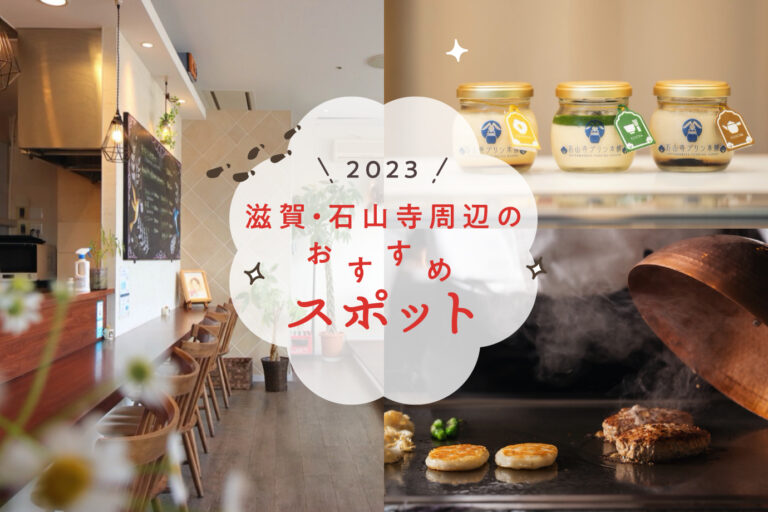
[2023] 6 recommended spots around Ishiyamadera Temple
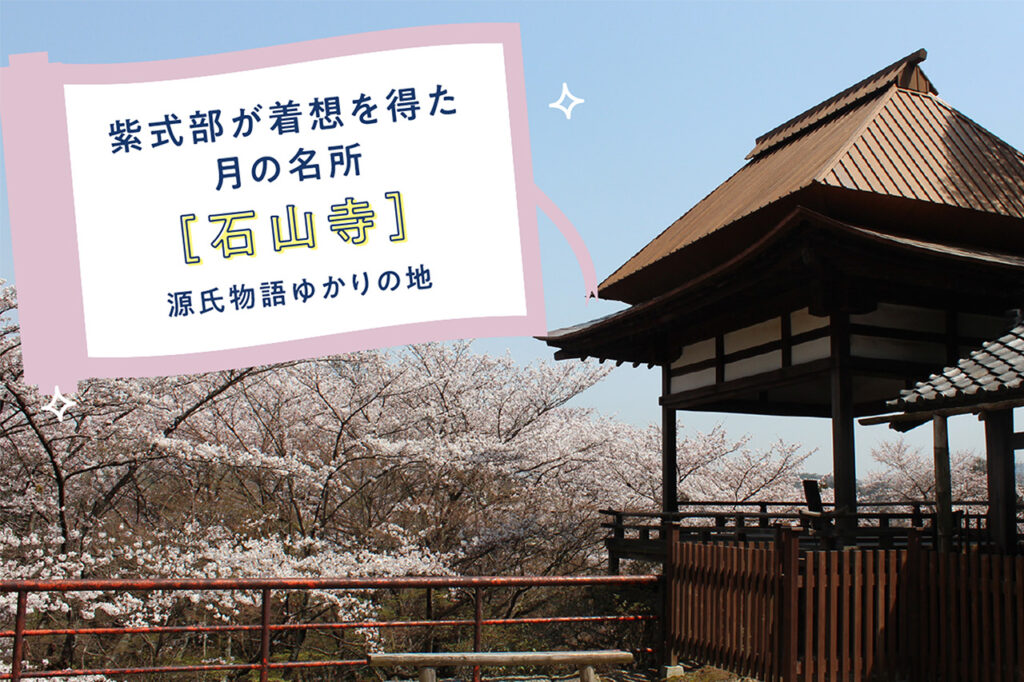

Murasaki Shikibu is the main character in NHK's 2024 historical drama series. We have started a series of articles focusing on "The Tale of Genji" written by Murasaki Shikibu. In the first installment, we visited Ishiyama-dera Temple in Otsu City, Shiga Prefecture, which is said to be the place where the concept was born.
A Japanese long story created by Murasaki Shikibu in the middle of the Heian period. Through the main character Hikaru Genji, the aristocratic society of the Heian period is depicted, including love, glory and downfall, political desires and power struggles.
During the Heian period (794-1185), pilgrimages to Kannon became popular among the aristocrats of Kyoto. It seems that not only Murasaki Shikibu but also many female literary figures such as Fujiwara no Michitsuna and Izumi Shikibu made pilgrimages here," a temple staff member told us. Kannon-mairi is a pilgrimage to the Goddess of Mercy to pray to her for success in this life and for the Pure Land after death. [Ishiyama-dera Temple is said to have been called the "Three Goddesses of Kannon" along with Kiyomizu-dera Temple in Kyoto and Hase-dera Temple in Nara. Ishiyama-dera was especially popular among court ladies because it was located a short distance from the capital of Kyoto.
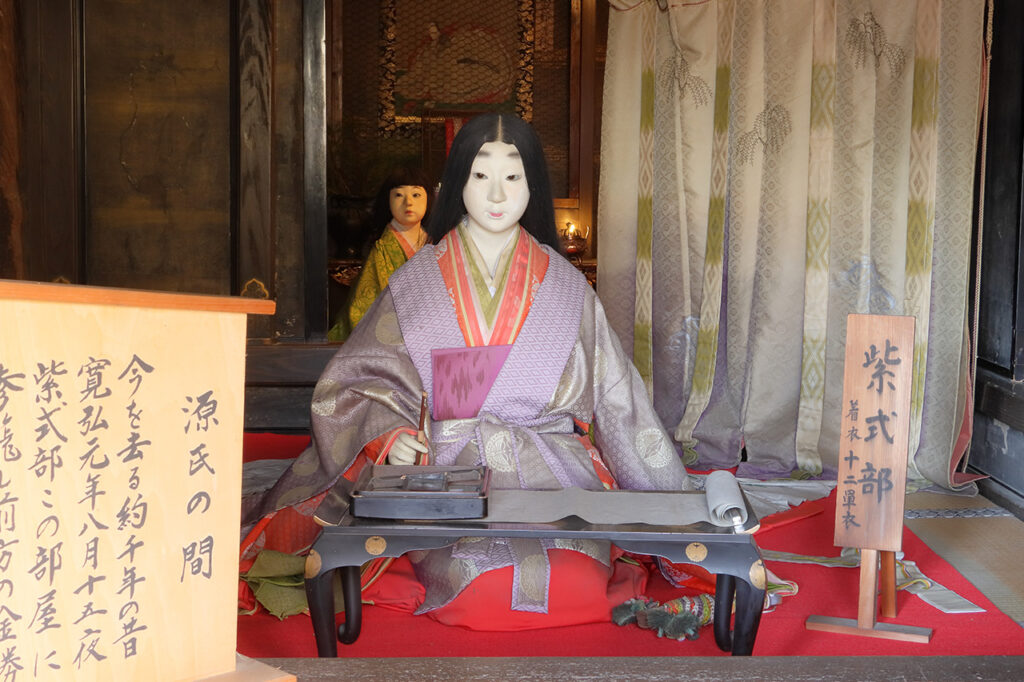
Murasaki Shikibu spent seven days in the Genji Room, where she is said to have seen the Mid-Autumn Moon reflected on the water and was inspired to write The Tale of Genji.

In 1004, Murasaki Shikibu stayed in the "Room of Genji," where she got the inspiration for The Tale of Genji. The last day of the seven days of Murasaki Shikibu's stay at Ishiyama, which is also known as one of the eight scenic spots of Omi, was exactly the full moon of the Mid-Autumn Festival. It is said that the first thing she wrote down when she saw the full moon reflected on the surface of the Setagawa River was the scrolls of "Suma" and "Akashi".
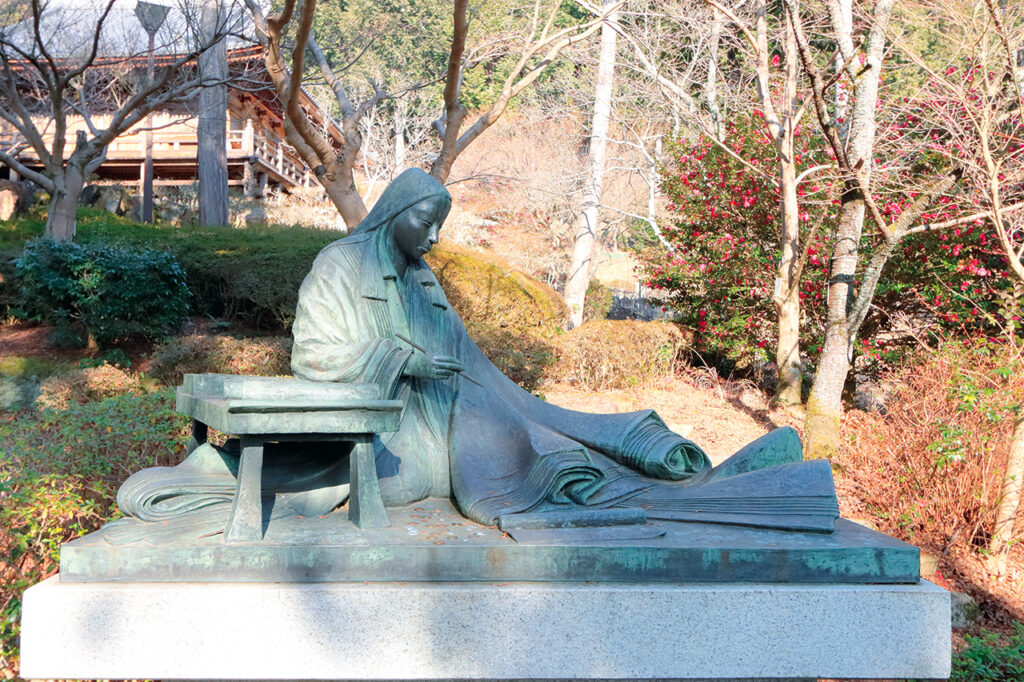
The statue of Murasaki Shikibu stands quietly surrounded by seasonal flowers. I hope you will visit it while strolling the precincts of the temple.

A scene of Hikaru Genji gazing at the famous moon and reminiscing about the capital in faraway Suma must have flashed in his mind. It is said that the story was originally inspired by a request from a princess at court, but it is deeply moving to think that the world's oldest full-length novel, which will be read for generations to come, was born in this place.
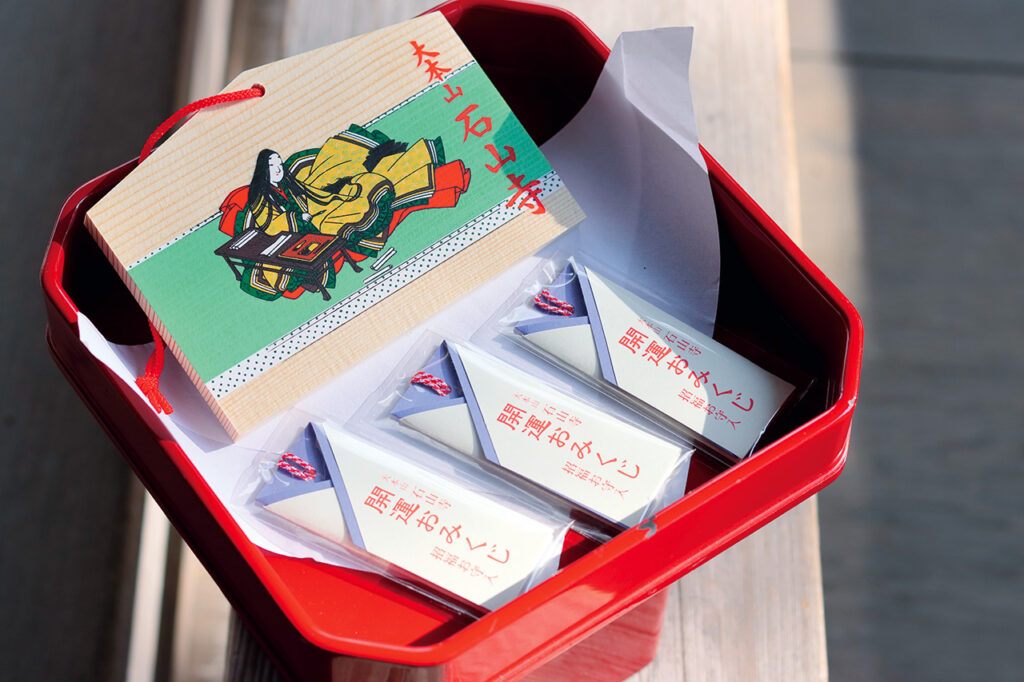
The 200 yen fortune written with a poem related to Murasaki Shikibu and the elegant ema (votive tablet) depicting Murasaki Shikibu are original to Ishiyama-dera Temple.

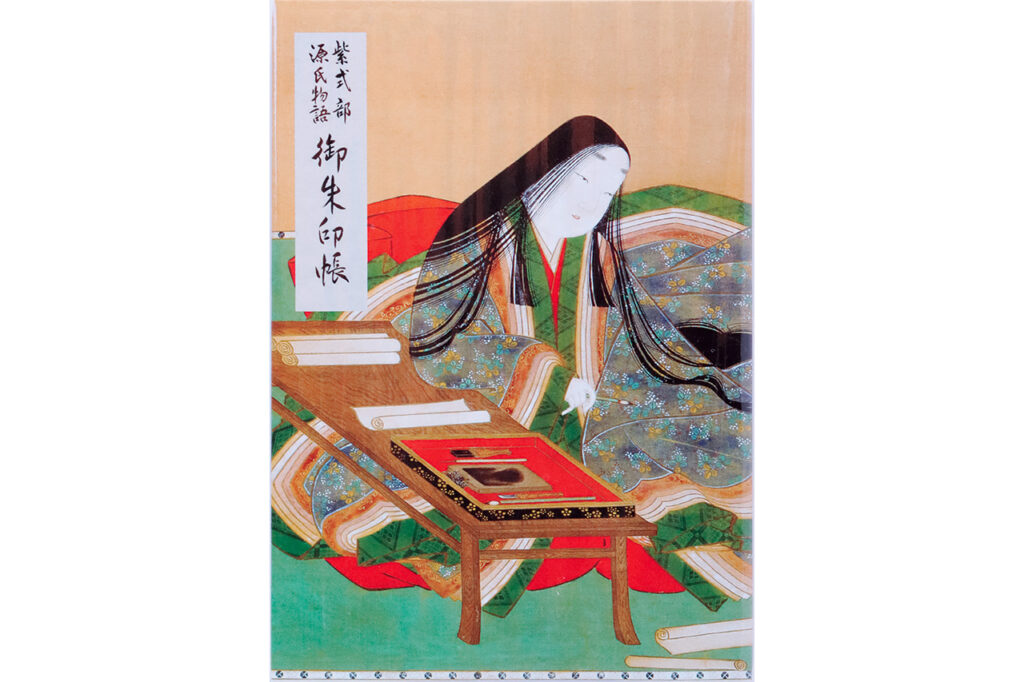
Red seal book with a portrait of Murasaki Shikibu by Tosa Mitsuki, a leading painter of the Tosa school of the Edo period, on the cover: 1,200 yen

[Ishiyama-ji Temple is literally a temple built on a mountain of stones. In ancient times, magma and limestone came into contact with each other and denatured at high temperatures, producing silica limestone so huge that it shook the sky.
Then, the first Besso of Todaiji Temple, Ro-ben Sojo (a Buddhist priest), came to the temple. He enshrined Kannon in this silica stone and prayed for the production of gold. He enshrined Kannon in the silica stone and prayed for the production of gold, and soon after, gold was discovered in Mutsu Province. In 747 (Tempyo 19), he enshrined Kannon and built a hermitage, which is said to be the origin of Ishiyama-dera Temple.
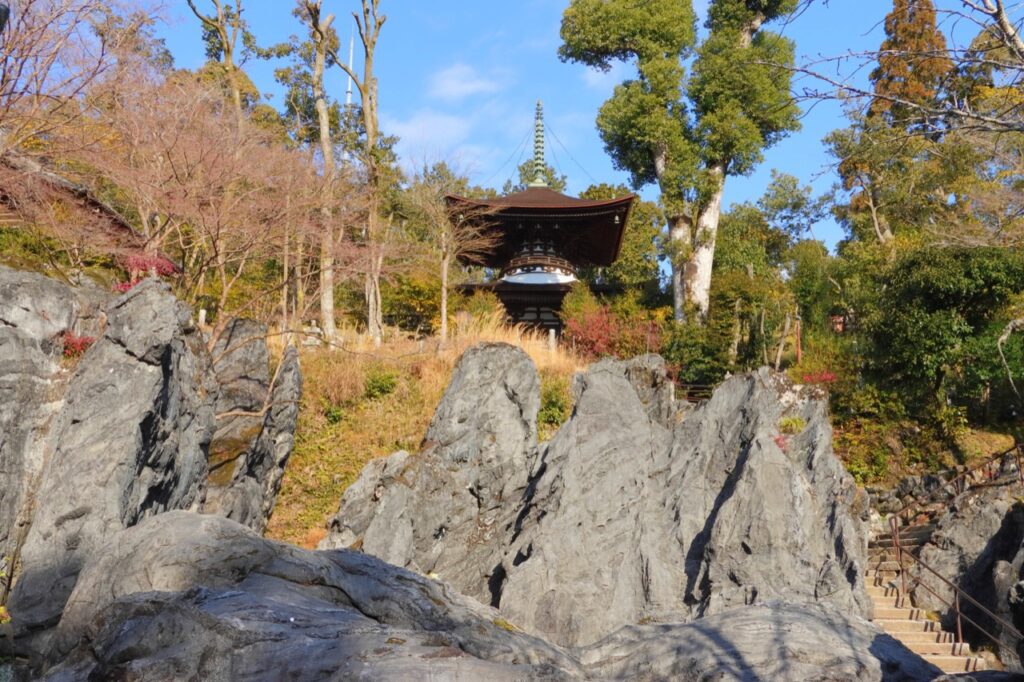
The huge silica stone located in the center of the temple grounds is a national natural monument. It is also the origin of the name of Ishiyama-dera Temple.

In addition to being a temple associated with Murasaki Shikibu, Ishiyama-dera Temple is also known as a "flower temple" where flowers bloom throughout the year. In early spring, from mid-February, the sweet fragrance of more than 400 plum trees of over 40 varieties bloom at three plum orchards scattered throughout the temple grounds. The temple is also popular as a cherry blossom viewing spot, with the early Kanzakura cherry trees beginning to bloom in early March, followed by Higanzakura cherry trees, Okanzakura cherry trees, Someiyoshino cherry trees, and late-blooming Satozakura cherry trees, with approximately 600 cherry trees of various varieties in bloom one after another. The view from Tsukimi-tei toward Lake Biwa is especially spectacular.
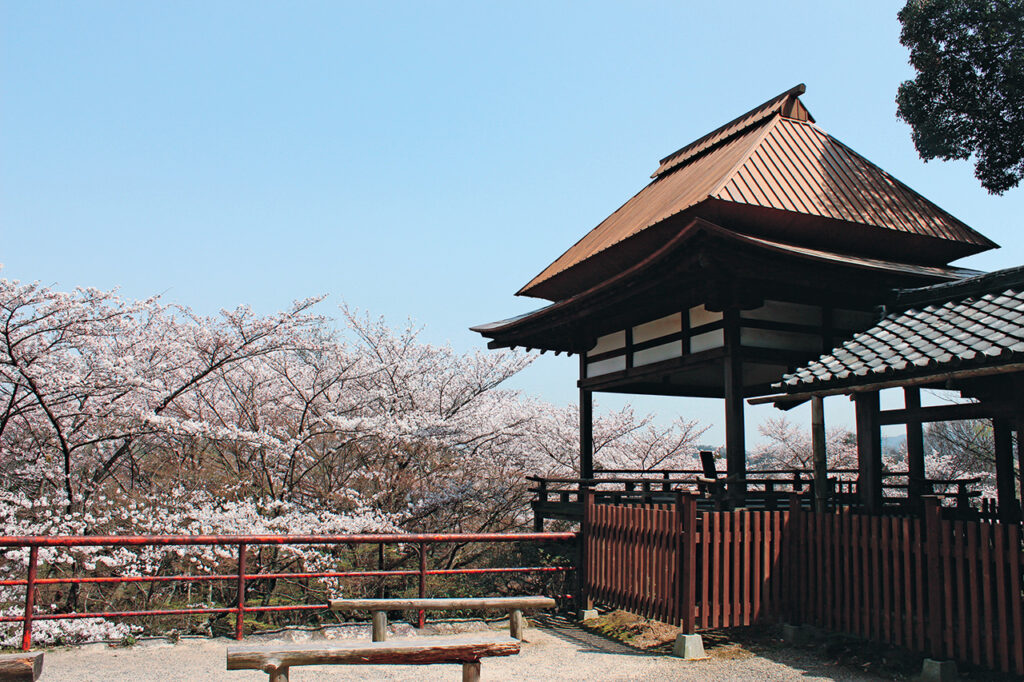

Over 600 interviews per year! An order site carefully selected by the editors who knows Kyoto and Shiga.
nowOfficial LINE friend registration500 yen OFF coupon is being issued!
Distributed every Friday morning at 8:00 am! From new restaurant information to event information that we want to share with you, We deliver articles about Kyoto that are useful to know. About 20,000 people have registered.Click here to add a friend!
 News
News Feature article
Feature article Featured event
Featured event